This article needs additional citations for verification .(June 2015) |

Harvard Hall is a Harvard University classroom building in Harvard Yard, Cambridge, Massachusetts.
This article needs additional citations for verification .(June 2015) |

Harvard Hall is a Harvard University classroom building in Harvard Yard, Cambridge, Massachusetts.

The present Harvard Hall replaces an earlier structure of the same name on the same site. The first Harvard Hall was built between 1674 and 1677. It was Harvard College's first brick building and replaced a decaying wooden building located a few hundred feet to the southeast. [1] Samuel Andrew, a local Cambridge merchant and shipwright was the master builder. [2]
The original Harvard Hall burned on January 24, 1764, destroying 4,500 of the College Library's 5,000 books as well as its collection of "philosophical apparatus" (scientific instruments). The Massachusetts General Court, which had been meeting in Harvard Hall to escape a smallpox epidemic in Boston, took responsibility for the fire and funded reconstruction. Thanks to generous donors such as Thomas Hollis V and John Hancock, within two years the new Harvard Hall housed a library larger than that the college had before the fire. [3] Thomas Dawes, who also built Hollis Hall at Harvard, was the master builder.
Under the specific advice of Benjamin Franklin, a new collection of scientific instruments and electrical demonstration equipment was acquired (mostly in London) to replace the apparatus that had been lost in the fire. The collection he assembled would later become part of the Harvard Collection of Historical Scientific Instruments, now on public display in the Harvard Science Center. [4]

The American Philosophical Society (APS), founded in 1743 in Philadelphia, is a scholarly organization that promotes knowledge in the sciences and humanities through research, professional meetings, publications, library resources, and community outreach. Considered the first learned society in the United States, it has about 1,000 elected members, and by April 2020 had inducted only 5,710 members since its creation. Through research grants, published journals, the American Philosophical Society Museum, an extensive library, and regular meetings, the society supports a variety of disciplines in the humanities and the sciences.


Charles Bulfinch was an early American architect, and has been regarded by many as the first American-born professional architect to practice.

Harvard Divinity School (HDS) is one of the constituent schools of Harvard University in Cambridge, Massachusetts. The school's mission is to educate its students either in the academic study of religion or for leadership roles in religion, government, and service. It also caters to students from other Harvard schools that are interested in the former field. HDS is among a small group of university-based, non-denominational divinity schools in the United States.
The Harvard Faculty of Arts and Sciences (FAS) is the largest of the ten faculties that constitute Harvard University.

The Harvard University Science Center is Harvard's main classroom and laboratory building for undergraduate science and mathematics, in addition to housing numerous other facilities and services. Located just north of Harvard Yard, the Science Center was built in 1972 and opened in 1973 after a design by Josep Lluís Sert.

Harvard Library is the network of Harvard University's libraries and services. It is the oldest library system in the United States and both the largest academic library and largest private library in the world. Its collection holds over 20 million volumes, 400 million manuscripts, 10 million photographs, and one million maps.

Massachusetts Hall is the oldest surviving building at Harvard College, the first institution of higher learning in the British colonies in America, and second oldest academic building in the United States after the Wren Building at the College of William & Mary. As such, it possesses great significance not only in the history of American education but also in the story of the developing English Colonies of the 18th century. Massachusetts Hall was designed by Harvard Presidents John Leverett and his successor Benjamin Wadsworth. It was erected between 1718 and 1720 in Harvard Yard. It was originally a dormitory containing 32 chambers and 64 small private studies for the 64 students it was designed to house. During the siege of Boston, 640 American soldiers took quarters in the hall. Much of the interior woodwork and hardware, including brass doorknobs, disappeared at this time.
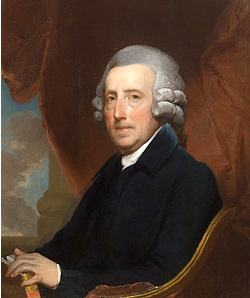
Thomas Dawes was a patriot who served as a Massachusetts militia colonel during the American Revolution and afterward assumed prominent positions in Massachusetts's government. His positions included membership and chairmanship of the Massachusetts Governor's Council and representative in both the House and Senate. As chairman of the Governor's Council, Dawes served briefly as the de jure presiding officer of the executive branch of Massachusetts' state government for ten days – May 20, 1800 to May 30, 1800 – following the death of first Governor Increase Sumner and then Lieutenant Governor Moses Gill.

Alexander Wadsworth Longfellow Jr. was an American architect and nephew of poet Henry Wadsworth Longfellow.
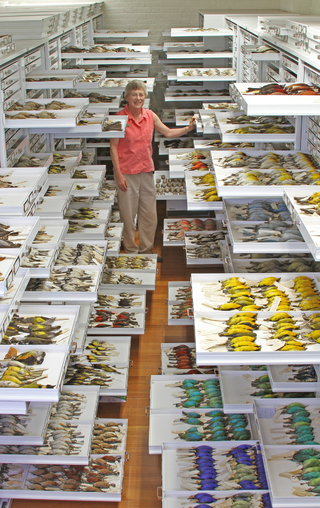
The Museum of Comparative Zoology is a zoology museum located on the grounds of Harvard University in Cambridge, Massachusetts. It is one of three natural-history research museums at Harvard, whose public face is the Harvard Museum of Natural History. Harvard MCZ's collections consist of some 21 million specimens, of which several thousand are on rotating display at the public museum. In July 2021, Gonzalo Giribet, Alexander Agassiz Professor of Zoology at Harvard and Curator of Invertebrate Zoology, was announced as the new director of the museum.

The Harvard Museum of the Ancient Near East is a museum founded in 1889. It moved into its present location at 6 Divinity Avenue in Cambridge, Massachusetts, in 1903.
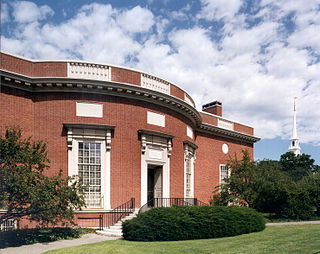
Houghton Library, on the south side of Harvard Yard adjacent to Widener Library, Lamont Library, and Loeb House, is Harvard University's primary repository for rare books and manuscripts. It is part of the Harvard College Library, the library system of Harvard's Faculty of Arts and Sciences. The collections of Houghton Library include the Harvard Theatre Collection and the Woodberry Poetry Room.

James Winthrop was an American librarian and jurist. Winthrop was the son of physicist John Winthrop. He was wounded at the Battle of Bunker Hill. He was librarian of Harvard from 1772 until 1787.

The Harvard–Yenching Library is the primary location for East Asia-related collections at Harvard Library. In addition to East Asian languages, it houses collections in European languages and Southeast Asian language (Vietnamese). Totaling more than 1.5 million volumes, the Harvard-Yenching Library has one of the largest collections in East Asian studies outside of Asia. The library has been located at 2 Divinity Avenue on the Cambridge campus of Harvard University since around 1957. The building was originally built in 1929 for Harvard's Institute of Geographical Exploration and currently houses part of the Harvard-Yenching Institute and the Department of East Asian Languages and Civilizations, in addition to the Harvard-Yenching Library.

The Hollis Street Church in Boston, Massachusetts, was a Congregational and Unitarian church. It merged with the South Congregational Society of Boston in 1887.

Lamont Library, in the southeast corner of Harvard Yard in Cambridge, Massachusetts, houses the Harvard Library's primary undergraduate collection in humanities and social sciences. It was the first library in the United States specifically planned to serve undergraduates. Women were admitted beginning in 1967.
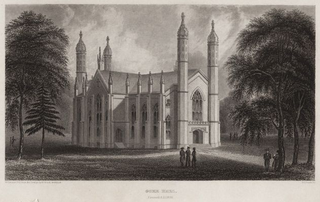
Gore Hall was a historic building on the Harvard University campus in Cambridge, Massachusetts, designed by Richard Bond. Harvard's first dedicated library building, a Gothic structure built in 1838 of Quincy granite, it was named in honor of Harvard graduate and Massachusetts Governor Christopher Gore.
Boylston Hall is a Harvard University classroom and academic office building lecture hall near the southwest corner of Harvard Yard, Cambridge, Massachusetts.
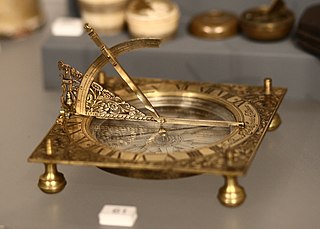
Harvard University's Collection of Historical Scientific Instruments (CHSI), established 1948, is "one of the three largest university collections of its kind in the world". Waywiser, the online catalog of the collection, lists over 60% of the collection's 20,000 objects as of 2014. The collection was originally curated by Mr. David P Wheatland in his office to prevent obsolete equipment from being cannibalized for its component parts and materials.